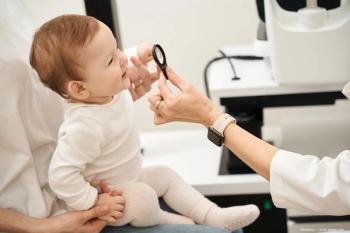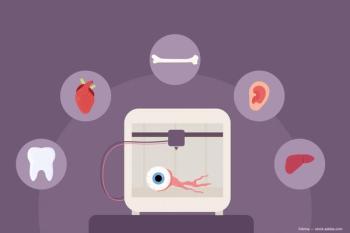
Blended vision with two different IOLs improves patient satisfaction
The combination of an apodized diffractive IOL (AcrySof ReSTOR, Alcon Laboratories) in one eye and a refractive multifocal IOL (ReZoom, AMO) in the other provides greater patient satisfaction than the same diffractive IOLs (AcrySof ReSTOR) in both eyes, according to a study conducted by Henry L. Milne, MD.
The combination of an apodized diffractive IOL (AcrySof ReSTOR, Alcon Laboratories) in one eye and a refractive multifocal IOL (ReZoom, AMO) in the other provides greater patient satisfaction than the same diffractive IOLs (AcrySof ReSTOR) in both eyes, according to a study conducted by Henry L. Milne, MD.
In a study of 54 patients, 96% of the 29 patients who received the combination lenses (AcrySof ReSTOR/ReZoom IOLs) were satisfied with the overall visual outcomes compared with 74% of 23 patients who received bilateral AcrySof ReSTOR implants. Patient satisfaction with near vision was high at 96% in the blended group compared with 83% in the bilateral AcrySof ReSTOR group. In addition, 94% of the patients in the blended group were completely free of glasses and all would have the procedure again. Thirty percent of bilateral ReSTOR group said they would not repeat the procedure, Dr. Milne said.
"The two different lenses work well together," explained Dr. Milne, during the American Society of Cataract and Refractive Surgery annual meeting. "It is my procedure of choice."
The apodized diffractive lens provides good near vision and the refractive multifocal implant offers patients good intermediate visual results, he emphasized.
Dr. Milne noted that each eye of the blended vision group achieved an uncorrected visual acuity (UCVA) between 20/40 and 20/20 individually, with an average UCVA of 20/30. Bilateral UCVA in this group was even better with a range between 20/25 and 20/15, with an average of 20/20 UCVA.
The range of vision in the blended vision group was impressive, Dr. Milne said.
"The average patient was able to hold a J3 card and read it beyond arm's length. The best patient outcome was 5 inches beyond arm's length," he said. "That is a very nice exercise to have your patients do. Their smiles get really big as they read at J3."
Patients in both the blended vision group and the bilateral ReSTOR group did experience halos at night. Dr. Milne said that patients should be warned preoperatively of this possibility.
Dr. Milne's paper received the Best of Session designation. He has no financial interest in either product.
Newsletter
Don’t miss out—get Ophthalmology Times updates on the latest clinical advancements and expert interviews, straight to your inbox.



















































.png)


